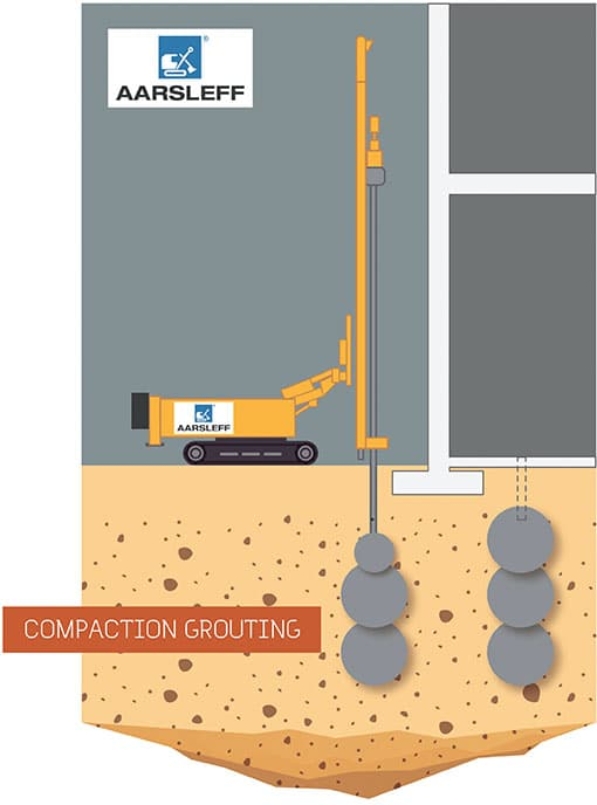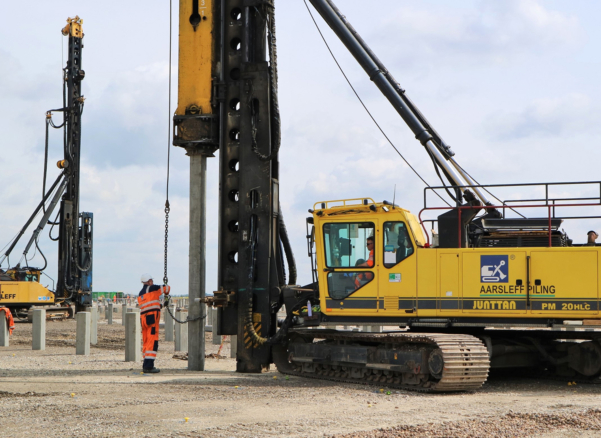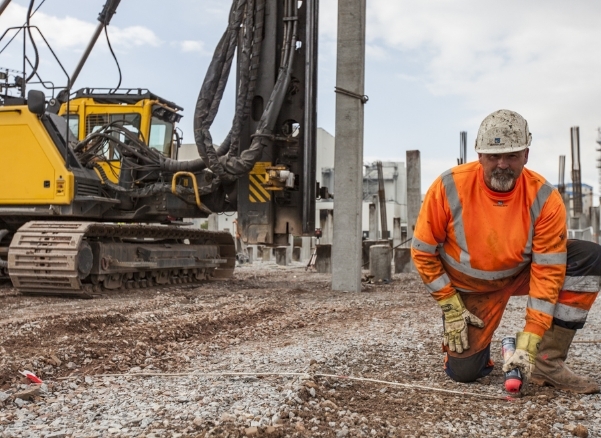What is Compaction Grouting?
Table of Contents
- About Compaction Grouting
- How Does Compaction Grouting Work?
- What Are the Key Parameters of Compaction Grouting?
- Compaction Grouting Specifications
- Benefits of Compaction Grouting
About Compaction Grouting
Compaction grouting is a ground improvement method which is used to increase the density and stability of the soil. By stabilising the ground, it enhances the safety and longevity of structures built on top. This method of grouting is usually used to rehabilitate the settlement of sensitive structures. [1]
It is carried out by injecting stiff mortar-like grout under pressure through cased boreholes to form bulbs, which push the surrounding soil to the side and increase its density. This grouting method is used for treating a wide variety of loose soils, with relatively good drainage, and is performed at depths ranging from 2m, right down to several tens of meters. [2]

How Does Compaction Grouting Work?
Compaction grouting works are carried out from the surface, with the grout bulbs created from the bottom-up in successive stages of 1m. The degree of densification depends on the type of soil treated and the grid pattern selected for the injection points, with injection rates generally varying from 4 to 6m3 per hour, with that reducing to 2m3 per hour in particularly sensitive conditions. Injection pressure is generally in the range of 1 to 4MPa. It can also be carried out from an existing basement or locations with limited headroom, and it is possible to drill through hard material to reach the low-strength strata beneath for treatment.
What Are the Key Parameters of Compaction Grouting?
The key parameters for compaction grouting are the grid pattern, the injection pressure and the grout take – these determine the performance of the grout take.
- The grid pattern is devised such that each drill hole nominally treats a given area in the plan. The grid can be square or triangular and generally makes the distinction between primary and secondary (and sometimes tertiary) holes. The grid is determined by the type of treatment required (localized or en masse)
and the radius of influence (Ri). - The radius of influence is the distance from the centre of the drill hole to the furthest point at which there is a change in void ratio as a result of the treatment.
- The injection pressure is dependent on the specific site conditions: the presence of buildings, civil engineering structures, open sites, treatment depths, etc.
- Pressure is prescribed by depth in stages at 1 bar (100KkPa) per meter of depth measured from the bottom of the stage.
- Most compaction grouting is performed using grid patterns of 4 to 9m2 with grout take varying from 2 to 6%. In the particular case of sinkholes, grout takes are highly variable and have been known to be as high as 14%.

Compaction Grouting Specifications
Specifications for the grout must meet the strict requirements and have the appropriate slump and grading, with the ultimate quality of grout dependent on the condition of the soil being treated. These requirements include that:
- It must be pumpable
- It must not cause soil fracturing
- It must not “bind up” leading to refusal of grout before the injection process is complete.
The grout must therefore have an appropriate slump and grading. The main constituent is a sandy material, often with added fines (cement, fillers, etc.). The usual slump value is circa 100mm.
Benefits of Compaction Grouting
The benefits of compaction grouting include the following:
- Cost-effective than other methods
- Maintenance-free solution for void filling
- Prevents collapse of granular soils and settlement under adjacent foundations
- Controls groundwater movement and protects utilities from damage
- Enhances soil strength and rigidity, and reduces ground movement
- Provides predictable degree of movement, critical for structural integrity
- Suitable for limited working spaces, offering designable strength and permeability

Sources
- Superior Grouting. (2024). What Is Compaction Grouting? Everything You Need to Know. Retrieved 4th December 2024, from:
https://www.superiorgrouting.com/blog/what-is-compaction-grouting-everything-you-need-to-know/#what-is-compaction-grouting - CES Hire (2022). Pressure Grouting Vs. Compaction Grouting. Retrieved 4th December, from:
https://blog.ces-hire.com/pressure-grouting-vs.-compaction-grouting








